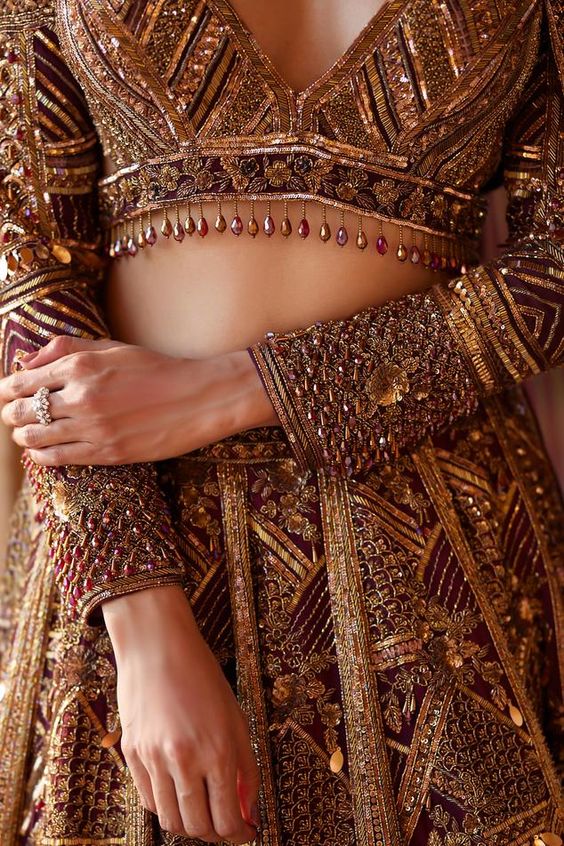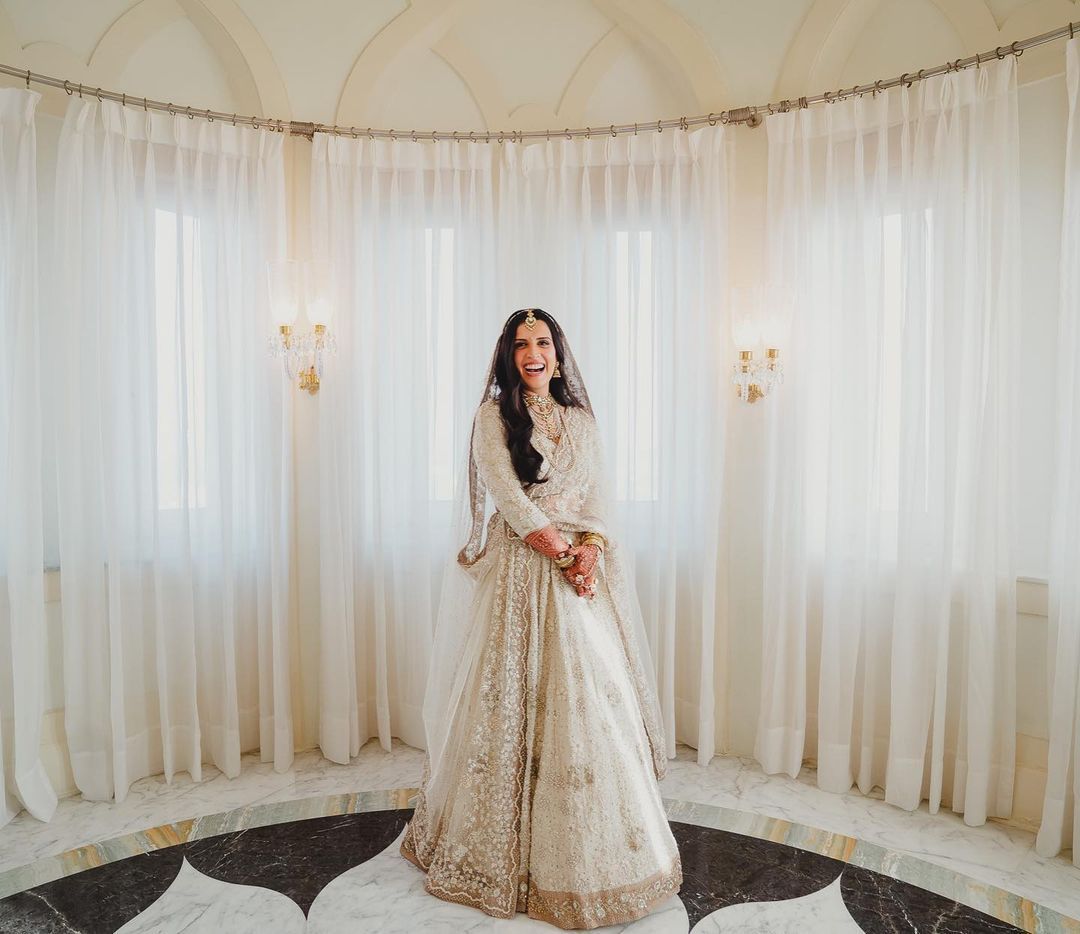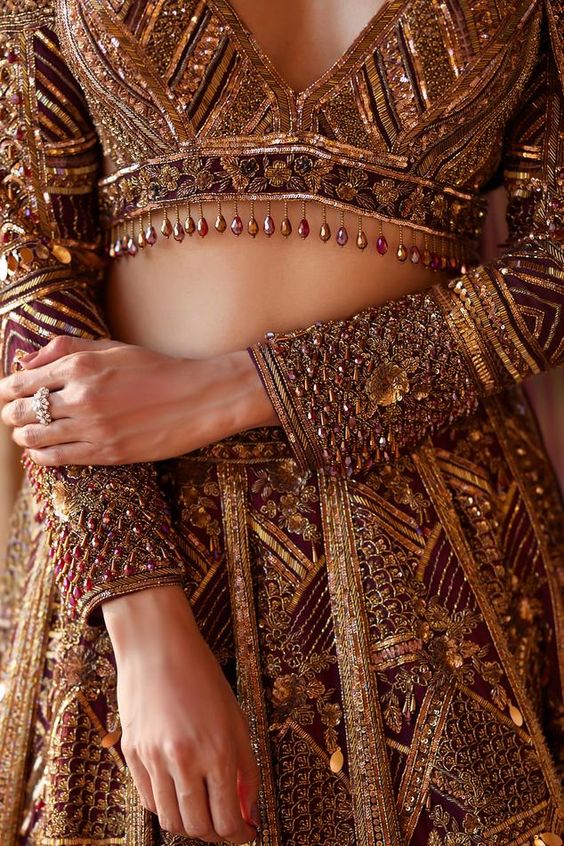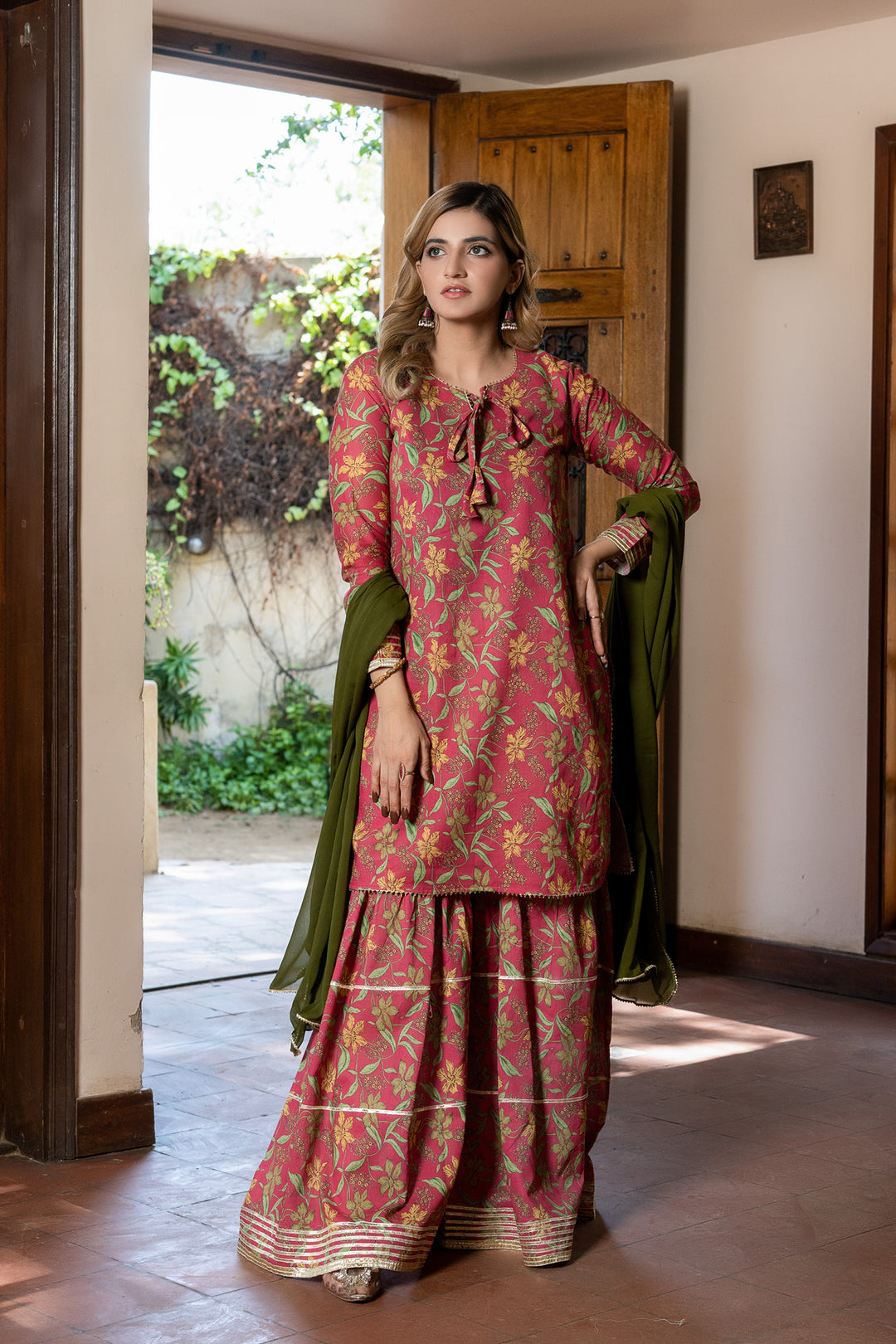Embroidery is an ancient craft that has been practiced for centuries, evolving and adapting across cultures and regions. From delicate hand-stitched designs to intricate machine-made patterns, embroidery encompasses a wide range of techniques, each with its own unique characteristics and appeal.
In this blog post, we will explore some of the diverse techniques of Pakistani & Indian embroidery, delving into their history& applications-
Some Popular Indian Embroidery Techniques:
-
Zardozi- Often found on clothing like sarees, lehengas, sherwanis, and other traditional Indian garments, zardozi is s highly regarded for its craftsmanship and is often associated with luxury and royalty & involves gold and silver threads which are commonly used, along with sequins, pearls, and sometimes precious stones.

-
Gota- Craftsmen use narrow strips of gold or silver ribbon, known as 'gota', which are meticulously stitched onto fabric to create intricate patterns and designs such as leaves, flowers, etc. It is often embellished further with additional elements like beads, sequins, and mirrors to enhance its decorative appeal, if one is looking for a heavier look.

-
Chikankari- Originated in Lucknow, India, and is renowned for its delicate and intricate craftsmanship. It involves the use of white cotton or muslin fabric, onto which various types of stitches are applied by hand to create beautiful patterns and designs like floral motifs, paisleys, vines, and geometric patterns.

-
Phulkari- The word "phulkari" translates to "flower work" in Punjabi, which reflects the predominant motif of floral designs in this style of embroidery. It is differentiated by its vibrant colors & bold patterns, created using brightly colored threads. Including sarees, bridal dresses, blouses & dupattas, Phulkari is now also gaining popularity in modern western dresses.

-
Mirror Work (Shisha)- Prevalent in many cultures, including Indian, Pakistani & Afghan, this technique involved attaching small pieces of mirror to accentuate the overall look of the otherwise plain fabric. Though an old style, this technique is still relevant in creating mirror work lehengas, suits, & more.

Some Popular Pakistani Embroidery Techniques:
-
Dabka- Similar to zardozi, dabka work also involves the use of metallic threads along with beads, sequins, and sometimes small pieces of metal, to create intricate designs on fabric.It is commonly found on various types of Pakistani & Indian traditional garments, including bridal wear is especially popular for special occasions such as weddings, festivals, and celebrations

-
Zari- Dabka work uses metallic threads made of copper whereas, zari work uses metallic threads made of zari which are typically made of fine gold or silver wire, sometimes wrapped around a silk or cotton core. Dabka work tends to have a bold and textured appearance due to the use of thicker metallic thread. On the other hand, Zari work is known for its fine and delicate appearance, with the metallic threads adding a subtle shimmer and richness to the fabric.

-
Resham- The term "resham" refers to silk threads, which are the primary material used in this type of embroidery. In resham work, artisans use silk threads of various colors to embroider intricate patterns and designs onto fabric. This is typically used in making heavy Pakistani suits or bridal wear as it adds a touch of luxe to the outfit.

-
Kundan- Kundan work on bridal wear involves incorporating the precious Kundan jewelry-making technique into the embellishment of bridal attire, particularly for weddings and other special occasions. This exquisite form of craftsmanship adds a touch of elegance, luxury, and cultural heritage to bridal ensembles, making them truly stand out.

-
Sequins & Beadwork- This embroidery type is used to to add sparkle, texture, and visual interest to garments because of its lustre. Typically, sarees & lehengas embellished with sequins & beads are a great attraction for newly wed brides, bridesmaid & other desi clothing enthusiasts.

The techniques highlighted in this blog post represent just a glimpse of the rich tapestry of embroidery traditions that exist across cultures. Whether exploring the delicate stitches of cross-stitch or the lavish embellishments of goldwork, embroidery offers endless opportunities for creativity and expression.
Know exactly which type of embroidery you love? Visit Karigur, a Pakistani & Indian bridal wear store where you can get your dream dress customized or buy from off-the-rack.







